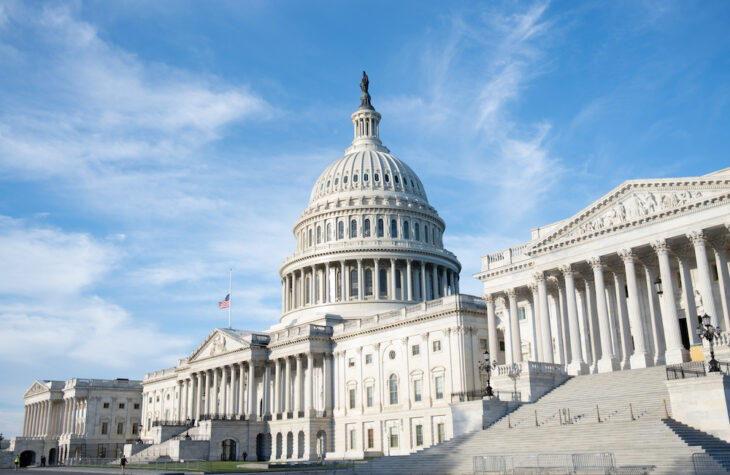
Summary of the Fiscal Responsibility Act

- 2-Year Spending Caps: The bill implements only two years of statutory spending caps (compared to the original ten years of caps in the House-passed Limit, Save, and Grow Act) enforced by a sequester. These caps are divided between defense and nondefense spending. Together these were the same design features–caps limited to two-year increments, split between defense and nondefense–that caused the previous set of caps to be waived consistently for higher spending levels. In addition, the bill then provides four years of congressional spending limits, but these are not statutory caps, meaning they can be easily waived in order to spend more.
- Permanent COVID Spending Levels: The bill effectively freezes spending from FY23 to FY24, when accounting for an additional $11 billion of spending provided elsewhere in the legislation. In addition, the rescissions in the bill to unspent COVID funds and IRS funding free up savings to keep nondefense spending for agencies high, and according to press reports, there may be other rescissions agreed to outside the text of the legislation for inclusion during the appropriations process for the same purpose. For instance, the White House claims that it is maintaining $758 billion in nondefense spending under this deal in FY24, allowing a sizable increase over FY23. Of course, the House-passed bill had a true cut to spending down to FY22 levels.
In billions
| FY22 | FY23 | FY24 | |
| Defense | 782 | 858 | 886 |
| Nondefense | 689* | 744* | 704 |
| Total Base | 1,471 | 1,602 | 1,590 |
| Additional Spending | NA | NA | 11 |
| Total Spending | 1,471 | 1,602 | 1,601 |
*Spending as scored upon enactment with CHIMP offsets for accurate comparisons
- “Administrative PAYGO”: The bill implements “administrative PAYGO,” which attempts to control administrative spending by requiring offsets for new spending over a certain threshold. However, the provision hinges on the Biden Administration not gaming the system by generating fake savings to pay for real costs. Further, the bill authorizes the OMB Director to waive the offset requirement if necessary for program delivery which Shalanda Young has already stated she would consider “if that waiver is deemed necessary to make sure President Biden’s agenda is carried forward.”
- Fake Savings Claimed: The Congressional Budget Office released a preliminary estimate that the bill would save some $2.1 trillion over six years only if all six years of budget caps remain in place, but without any statutory mechanism to ensure they will remain in the last four years. The final four years of caps in the deal are merely a promise that can easily be waived and therefore inappropriate to assume savings from. The final CBO score projects that the bill would save $1.5 trillion over ten years against a baseline that assumes that discretionary spending grows with inflation each year.
- $4 Trillion Debt Limit Increase: The deal suspends the debt ceiling through the remainder of Biden’s term, after the presidential elections, to January 2025, the equivalent of roughly $4 trillion in allowable new debt. This eliminates all leverage to force spending reductions. The House bill increased the debt ceiling by only $1.5 trillion in exchange for nearly $5 trillion in savings and other policy victories, and maintained leverage for another spending fight next year.
- Maintaining IRS Expansion: The bill implements a $1.4 billion “cut” from the $80 billion expansion to the IRS from the Inflation Reduction Act. The House bill repealed the entirety of the Biden administration’s plan to hire 87,000 new IRS agents. However, the $1.4 billion cut is almost meaningless since the $80 billion appropriation to expand the IRS was a lump sum authorized through 2031. The IRS will simply back-fill the cut with the remaining funds to ramp up this year.
- Maintains Green New Deal Credits: The bill leaves the Biden administration’s cost-driving green energy credits from the ‘Inflation Reduction Act’ in place. These provisions are estimated to cost taxpayers $1.2 trillion over time while serving as a key contributor to rising energy prices that have propped up sustained inflation and degraded the nation’s grid.
- Incentivizes Omnibus Bills: The bill allows for a further 1% reduction of the two-year caps if a Continuing Resolution (CR) has been passed. This will actually incentivize omnibus bills and further diminishes the possibility of using the appropriations process to combat the woke and weaponized bureaucracy. Bill proponents claim this is an “automatic CR,” but the bill does not include the actual continuing resolution in the event that the normal appropriations bills are not completed by the beginning of a new fiscal year.
- Watered Down Work Requirements: The deal’s work requirements are minimal and limited to TANF and the SNAP food stamp program. For TANF, states are credited for reducing their caseloads. The deal would update the caseload references from 2005 to 2015, which may or may not lead to caseload reductions. For SNAP, the deal raises age limits for exemptions from work requirements for able-bodied adults without children from 50 to 54 years old, but phases that in over three years and sunsets it in 2030. When the increased exemptions from work requirements for certain categories of people are factored in, CBO estimates that SNAP spending will actually increase by $2.1 billion.
- Future Lame Duck Omnibus: The deal moves consideration of the next debt ceiling to the lame duck following the November 2024 presidential elections, thereby setting up the precise same scenario witnessed just last December when Congress passed the $1.7 trillion omnibus. But perhaps most egregiously, this deal eliminates all remaining leverage to enact real cuts to woke and weaponized government and to secure the border for the remainder of President Biden’s term.



